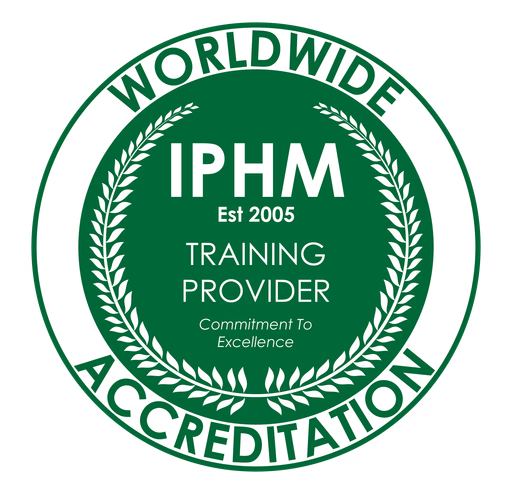
Introduction to Sound and Vibration Massage
Sound and vibration massage is more than just lying down while someone plays soothing tones. It’s a deeply therapeutic experience that uses sound waves and vibrations to bring balance to the body and mind. As a specialized form of massage therapy, it fits within a broader tradition of using touch and technique to promote well-being. Imagine feeling music not just through your ears, but vibrating through your cells that’s the essence of sound healing.
What is Sound and Vibration Massage?
This therapy combines acoustic instruments like singing bowls, gongs, or tuning forks with vibrational frequencies that resonate throughout the body. Practitioners may also use vibroacoustic beds or chairs that deliver low-frequency vibrations to help release tension and promote relaxation. In addition, some practitioners apply a vibration technique using their hands and fingers, performing gentle, trembling movements to stimulate soft tissues, reduce muscle tension, and enhance circulation.
A Brief History of Sound Healing
Sound as a healing tool isn’t new. Ancient cultures from Tibet to Greece used drums, chants, and instruments to restore harmony. Pythagoras, the Greek philosopher, believed in the “music of the spheres,” showing that sound has been tied to healing for centuries.
How Sound and Vibrations Affect the Body
Our bodies are made up of energy and vibrations. When exposed to specific frequencies, our cells, organs, and even brainwaves can align with them, creating a state of harmony. These vibrations can also stimulate nerves, which helps promote relaxation and improve overall well-being. Think of it as tuning a musical instrument except the instrument is you.
The Science Behind Sound Therapy
Frequency and Resonance Explained
Every object, including your body, has a natural frequency. When exposed to external vibrations, your system can resonate in harmony, promoting balance.
The Role of Brainwave Entrainment
Sound therapy can guide the brain into specific states like alpha (relaxed) or theta (deep meditation). This process, called brainwave entrainment, helps people reduce stress and achieve mental clarity.
Vibrations and Cellular Health
Studies suggest that low-frequency vibrations may stimulate circulation, improve circulation, reduce inflammation, and support cellular repair. It’s like giving your body a subtle internal massage.
Physiological Effects of Sound and Vibration Massage
How Vibrations Influence the Nervous System
The physiological effects of sound and vibration massage reach deep into the body, offering a wide range of benefits that go beyond simple relaxation. At the heart of vibration massage also known as vibration therapy is the use of gentle, rhythmic movements that stimulate the body’s soft tissues, including muscles, tendons, and ligaments. This stimulation has a profound impact on the nervous system, which plays a crucial role in regulating everything from pain perception to muscle function.
When massage therapists apply vibration massage techniques, they create a soothing up and down movement that interacts directly with the skin and underlying tissues. This motion stimulates nerve endings, helping to relieve muscular tension and reduce pain. For those dealing with tight muscles or delayed onset muscle soreness after exercise, the benefits of vibration are especially noticeable. The gentle pressure and repetitive motion can help to ease stiffness, break down scar tissue, and promote a greater range of motion in the affected areas.
One of the key physiological effects of vibration therapy is its ability to improve blood flow and circulation. The vibrations encourage the movement of blood through the vessels, delivering fresh oxygen and nutrients to muscle fibres and other tissues. This enhanced circulation not only supports the healing process but also helps to flush out waste products and reduce inflammation. As new blood cells are produced and more capillaries are stimulated, the body’s natural ability to repair itself is boosted, making vibration massage a valuable tool for recovery and performance.
Vibration massage also has a calming effect on the nervous system, which can help to decrease stress and anxiety. The repetitive, soothing stimulation signals the body to relax, lowering heart rate and promoting a sense of well-being. This is particularly beneficial for individuals who experience chronic stress or anxiety, as the therapy helps to balance the nervous system and encourage relaxation.
Massage therapists often incorporate vibration techniques alongside other massage methods to create a comprehensive treatment plan. By combining vibration with techniques like effleurage or petrissage, therapists can target both surface and deeper layers of tissue, maximizing the therapeutic effects. Whether used to address muscle cramps, relieve pain, or simply promote relaxation, vibration massage offers many benefits for the human body.
In summary, the physiological effects of sound and vibration massage are both complex and highly beneficial. By stimulating the nervous system, improving blood circulation, and supporting the healing of soft tissues, vibration therapy can help to reduce pain, relieve muscular tension, and promote overall health. Whether you’re an athlete looking to enhance performance, someone recovering from injury, or simply seeking a way to relax and decrease stress, vibration massage is a powerful and versatile massage technique that supports the body’s natural healing abilities.
Benefits of Sound and Vibration Massage
Physical Benefits
Muscle Relaxation and Pain Relief
Vibrations penetrate deep into tissues, easing muscle stiffness and chronic pain. Some massage techniques, such as friction, use more pressure to target deeper tissues and relieve chronic pain. Many clients report relief from tension headaches and back pain.
Improved Sleep Patterns
Gentle sound frequencies calm the nervous system, making it easier to fall asleep and stay asleep.
Mental and Emotional Benefits
Stress Reduction and Emotional Balance
The soothing tones slow the heartbeat, lower blood pressure, and bring emotional calmness—like hitting a reset button for your nervous system.
Enhanced Focus and Creativity
After a session, many people feel mentally clearer and more inspired. Sound waves help clear mental “clutter” so creativity flows more easily.
Who is Suitable for Sound and Vibration Massage?
People Experiencing Stress and Anxiety
If your mind is racing or you feel overwhelmed, sound healing can restore inner calm and reduce cortisol levels.
Those with Sleep Disorders
Insomnia or restless nights? Vibrational therapy promotes relaxation and deeper sleep cycles.
Individuals Seeking Pain Relief
Chronic pain sufferers often find comfort in sound therapy as a complement to medical care.
People with Emotional Blockages
If you’ve been holding on to grief, trauma, or unresolved emotions, vibrations can help release stuck energy.
Spiritual Seekers and Meditators
For those exploring mindfulness or spirituality, sound massage deepens meditation and heightens awareness.
Athletes and Active Individuals
Muscles recover faster when exposed to vibration, making it useful for athletes or anyone with a physically demanding lifestyle. Vibration massage can also be used as a pre event intervention to prepare muscles for activity, increasing blood circulation and flexibility. Athletes may use a massage gun, such as the hypervolt, or other massage guns to target deep muscles, enhance recovery, and improve range of motion.
Who Should Be Cautious or Avoid It?
Pregnant Women (First Trimester)
Intense vibrations may not be recommended during early pregnancy. Always consult a doctor first.
People with Pacemakers or Metal Implants
Vibrations and frequencies may interfere with devices or cause discomfort near implants.
Individuals with Epilepsy
Sudden sounds or vibrations could trigger seizures in sensitive individuals.
Those Sensitive to Loud Sounds
If you’re highly sound-sensitive, start gently or opt for quieter methods like tuning forks.
Different Methods of Sound and Vibration Massage
Tibetan Singing Bowls
Placed on or around the body, they produce vibrations that travel through the skin, muscles, and bones.
Gong Baths
Large gongs create immersive soundscapes that flood the senses, inducing deep relaxation.
Tuning Fork Therapy
Practitioners strike tuning forks and place them on specific energy points, sending vibrations directly into the body.
Vibroacoustic Therapy
Special beds or chairs deliver low-frequency sounds directly into the body for therapeutic effects.
Preparing for a Sound and Vibration Massage
What to Expect in a Session
You’ll lie down fully clothed while the practitioner uses instruments or vibration devices around or on you.
How to Choose a Practitioner
Look for certified practitioners with experience in sound healing. Personal recommendations or reviews can help you find the right fit.
Setting Intentions Before the Session
Clarify what you want stress relief, emotional release, or spiritual growth. This helps guide the session’s energy.
Aftercare and Integration
Post-Session Reflection
Take time to journal or meditate on what you felt during the session.
Hydration and Grounding Practices
Drink water, walk barefoot, or do light stretches to integrate the effects.
Incorporating Sound Healing into Daily Life
Use sound bowls, calming music, or humming as mini-sessions between professional treatments.
Conclusion
Sound and vibration massage is a versatile therapy that suits a wide range of people from stressed professionals to athletes and spiritual seekers. While it’s generally safe, certain groups should take precautions. If you’re curious about trying it, start with an open mind and see how your body responds. It may just become your favorite way to relax, heal, and reconnect with yourself.
FAQs
Most people benefit from 3–5 sessions, but ongoing therapy can bring deeper results.
Yes, in gentle forms, but always consult a pediatrician first.
Not at all. Sound healing works even if you’ve never meditated before.




